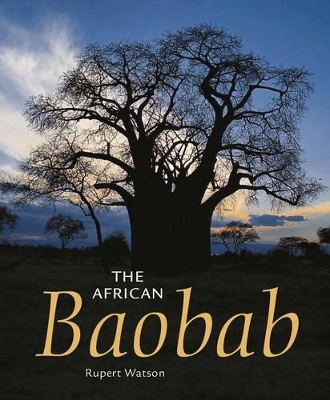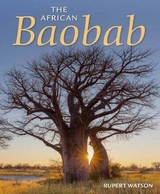
The African Baobab
Seiten
2001
Struik Publishers (Verlag)
978-1-77007-430-9 (ISBN)
Struik Publishers (Verlag)
978-1-77007-430-9 (ISBN)
- Titel erscheint in neuer Auflage
- Artikel merken
Zu diesem Artikel existiert eine Nachauflage
Explores the life and times of the baobab tree, from its early Madagascan beginnings to its present status on the continent and its future in a changing Africa. This book takes a look at the myriad uses of baobabs over the ages. It also explores other relationships between humans and the baobab tree.
The baobab is surely the botanical symbol of Africa, instantly recognizable from afar and a compelling icon of the African landscape. This age-old 'upside-down tree' invariably inspires wonder, awe and mystery, and has intrigued travellers for hundreds of years. In an absorbing, inspired account, author Rupert Watson explores the life and times of this fascinating tree, from its early Madagascan beginnings to its present status on the continent and its future in a changing Africa. He takes a close look at the myriad uses of baobabs over the ages: their hollow centres have served as prisons, toilets, wells and bars, and some specimens have even been used as a refuge in battle or as burial sites. Other relationships between humans and the baobab are explored too, often illustrated by delightful anecdotes. The curious baobab is shown in its many stages, moods and guises - and sometimes in the most unlikely places. This book cannot fail to inspire.
The baobab is surely the botanical symbol of Africa, instantly recognizable from afar and a compelling icon of the African landscape. This age-old 'upside-down tree' invariably inspires wonder, awe and mystery, and has intrigued travellers for hundreds of years. In an absorbing, inspired account, author Rupert Watson explores the life and times of this fascinating tree, from its early Madagascan beginnings to its present status on the continent and its future in a changing Africa. He takes a close look at the myriad uses of baobabs over the ages: their hollow centres have served as prisons, toilets, wells and bars, and some specimens have even been used as a refuge in battle or as burial sites. Other relationships between humans and the baobab are explored too, often illustrated by delightful anecdotes. The curious baobab is shown in its many stages, moods and guises - and sometimes in the most unlikely places. This book cannot fail to inspire.
Rupert Watson was born in England, but has lived in Kenya for nearly 30 years, where he practises sometimes as a lawyer and mediator, and always as a naturalist. Rupert has authored two previous books and has written natural history and travel articles for a wide range of publications including New Scientist, London Times, Independent, Geographical Magazine, Africa Geographic and Travel Africa.
| Erscheint lt. Verlag | 26.10.2007 |
|---|---|
| Sprache | englisch |
| Maße | 177 x 215 mm |
| Gewicht | 752 g |
| Themenwelt | Sachbuch/Ratgeber ► Natur / Technik ► Natur / Ökologie |
| ISBN-10 | 1-77007-430-9 / 1770074309 |
| ISBN-13 | 978-1-77007-430-9 / 9781770074309 |
| Zustand | Neuware |
| Haben Sie eine Frage zum Produkt? |
Mehr entdecken
aus dem Bereich
aus dem Bereich
über 500 faszinierende Gesteine, Minerale, Edelsteine und Fossilien
Buch | Hardcover (2023)
DK Verlag Dorling Kindersley
CHF 39,90
Familien und Gattungen einheimischer Pflanzen
Buch | Hardcover (2022)
Haupt Verlag
CHF 67,95
vollständig aktualisierte Neuausgabe mit den zusätzlichen …
Buch | Softcover (2023)
Westend (Verlag)
CHF 30,80



